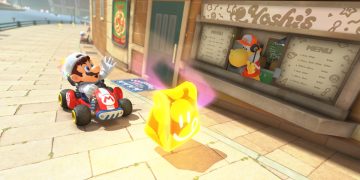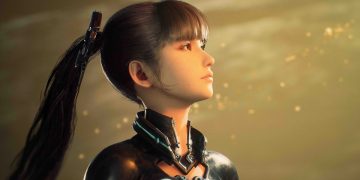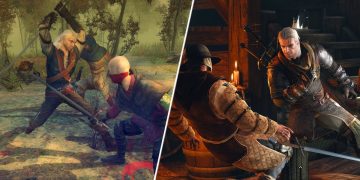Warning: Major Spoilers for Dragon Age: The Veilguard Ahead
The Executors, first hinted at in Dragon Age: Inquisition through War Table missions, play such a subtle part that their presence is easy to overlook. This might just be by design. From their introduction, they’ve remained a shadowy presence hailing from Across the Sea, and in Dragon Age: The Veilguard, their mystery deepens considerably. It hints that they could be the next big threat to Thedas, although it also has the vibe of being a Red Herring. Only time will tell.
Plenty of questions still hover around the Executors and their grand ambitions, wrapped in layers that seem to hold the secrets of Thedas itself. Dragon Age: The Veilguard sheds more light on them compared to Inquisition. For those eager to dive deep, here’s a comprehensive look at what we know about the Executors so far.
What Dragon Age: Inquisition and Tevinter Nights Expose About the Executors
The Executors & The Inquisition
In Dragon Age: Inquisition, Executors make their debut, marked by their symbolic downward triangle with wave-like lines at their outposts. Through the War Table, players can piece together that this symbol corresponds with agents representing powers from Across the Seas. While Cullen dismisses them, Leliana seeks to know more, leading to divergent outcomes: opting for Cullen results in the mysterious abandonment of three Inquisition outposts, with a cryptic note about standing vigil and an allusion to tougher days ahead. However, the Inquisition agents in these camps vanish after offering themselves for a higher cause.
If Leliana takes the lead, the Inquisitor gets a note admiring her tracking skills, suggesting they’re not adversaries yet and sharing some insights as a goodwill gesture. Yet, in both scenarios, the Executors vanish as quickly as they appeared.
Tevinter Nights Offers a Unique Visual Clue
In the short story "The Dread Wolf Takes You" from Tevinter Nights, an Executor is present at a meeting meant to discuss Solas’s machinations. Solas, wary of them, petrifies the Executor, highlighting their potency to Charter, a member of the Inquisition.
Despite being physically present, the Executors hide their true selves, donning full robes with a mesh shrouding their face, their voice void of any discernible gender or age.
Key Takeaways
Individually, these facts don’t spill too many secrets. Yet, there are noteworthy points:
- Their appearance, or lack thereof, holds significance.
- They maintain some connection either with those residing across the ocean or the ocean itself, a fact punctuated by the Qunari’s exodus from those lands.
- Their ability to slip past Leliana and make entire camps of people disappear is certainly intriguing.
- The term "will" featured in communications is quite telling, especially considering Corypheus’s fervent declarations of actions being his Will.
What Exactly is an Executor?
The term "Executor" could be vital here. Unlike the unique racial label of the Qunari, an Executor traditionally refers to a person or organization tasked with executing a deceased person’s will. This raises the question of who the Executors’ testator might be, or whose will they are fulfilling.
What Dragon Age: The Veilguard Reveals About the Executors
Dragon Age: The Veilguard unveils a lot more about the Executors, with a pivotal secret ending and a particular location in Dock Town enhancing the intrigue. In Dock Town, players discover an investigation board that connects the dots between major events from the previous Dragon Age titles, marked by enigmatic black figures. One figure, conspicuously off the board, likely signifies its foreign origin to Thedas.
Dragon Age: The Veilguard’s Secret Ending Sheds Light on Their Actions
This secret ending, uncovered by discovering three mysterious circles across Northern Thedas, presents a sequence of slides that expose the Executors’ sway over Thedas in recent years. Accompanied by a revealing dialogue:
"The storm, quelled. The sun, dimmed. The wolf, defanged. At last, we have balanced. Guided. Whispered. And soon the poisoned fruit ripens, we come."
These lines references Ghilan’nain, Elgar’nan, and Solas, insinuating the disposal of the Evanuris as part of their scheme.
An image of robed figures around a stabbed corpse with the Black City in the backdrop possibly alludes to a blood magic ritual linked to the "Tevinter Old Gods." Despite traditionally being seven, five figures are shown, hinting that two might be Executors.
"Guided" plays over Loghain with a dead King Cailin in the background, "Whispered" stages Bartrand, with Knight-Commander Meredith and First Enchanter Orsino peeking in. Following, a slide morphs Corypheus and Flemeth into an Executor figure with the announcement, "And soon the poisoned fruit ripens."
Finally, their refined symbol emerges as "We come" declares their approach. The symbolism in its sharp, dragon-esque design and erratic waves hints at deeper meanings, surrounded by 14 completed bronze circles.
Some speculate we’ve seen the last of Thedas in the forthcoming Dragon Age 5, but I think that’s a stretch. With its rich lore and intrigue, Thedas isn’t going anywhere. The closing line, "we come," implies they’re venturing into Thedas.
The Mysterious Circles
These circles come accompanied by codex entries, drawn from an Elf named Saeris, First of Clan Ersallae. The initial codex remarks how they only find fragments, causing their skin to crawl. A Dalish Keeper proposes these artifacts link back to the Forgotten Ones.
In the second codex, Saeris finds a complete circle in the shadowy Deep Roads, the air greasy even amidst magical light, describing the circle’s coldness by the fire and etched with the Executor symbol.
Delving deeper, Saeris investigates this greasy air, uncovering tunnels leading under the ocean. There, confronted by a figure dressed in a grey robe, mask, and helmet, presumed to be an Executor. The figure exhibits an unsettling shifting arm, with Saeris only saved by their companion as fear paralyzes them. Their journal concludes with "Let the past keep its secrets."
The Executor’s Dialogue
The dialogue accompanying these enigmatic circles emphasizes their non-aggressive stance. The initial circle discovery suggests they "predicted, expected, and hoped" someone intercepts, likely referring to the Elven Gods. Subsequent dialogues promise Rook revelations "soon" and describe the unforeseen defeat of a Revenant Dragon as "fascinating."
Their acknowledgment of the Blight-infested Dragon, hinting at a connection between the Executors and the Blight, is especially noteworthy.
Those Across The Sea: Old Foes of the Evanuris
In a codex entry, it’s confirmed that Those Across The Sea have origins as ancient as the Evanuris and previously conflicted with them. This raises numerous questions about their previous whereabouts and the Executors’ true nature.
Key Takeaways
A standout realization is the Executors pulling the strings since Dragon Age: Origins, subtly nudging events from Loghain’s betrayal to Bartrand’s dive into the Deep Roads. They didn’t dictate these actions but possibly emboldened their decisions through reinforcement of Will.
The corpse remains an enigma, alluding to involvement with the Magisters entering the Golden City and igniting the Blight.
Interestingly, the Executors don’t claim responsibility for the Conclave’s destruction, instead, turning attention to the ‘poisoned fruit.’ This aligns with their probing nature through events post-Bartrand: DA2, Inquisition, and The Veilguard. It seems the Executors recognize the Evanuris as impediments to their endgame. The motivation driving their schemes is still shrouded in mystery, though often, the purpose unveils itself in retrospect.
If we interpret the title Executor through the lens of the U.S. legal system, it’s tempting to connect "poisoned fruit" with the metaphor for unlawfully obtained evidence.
While it seems their ultimate aim was sidelining the Evanuris for larger plans, it feels almost too simplistic, like a deliberate misdirection. Examining their actions, this conclusion seems plausible, yet Bartrand’s link feels overly complex. Given recent insights about the Lyrium Idol, it ties seamlessly with Solas and the Elven narrative, stretching across games but creating quite the narrative leap from DA2 to Veilguard. Their foresight is apparent.
That said, their actions hint toward two outcomes: fostering Thedas’ emerging Heroes and Weaking the Veil. With Dragon Age: The Veilguard, the ending proclaims the Veilguard’s vigilance continues, hinting threats aren’t yet quelled. As for the Executors’ true intentions for Thedas, it seems fans will need to hold tight and watch how the story unfolds.














































